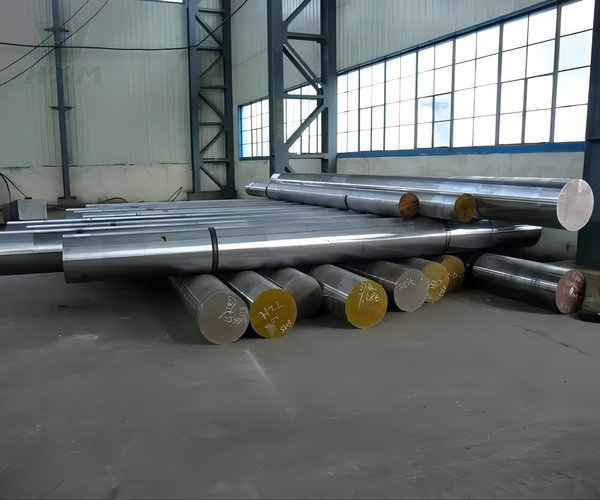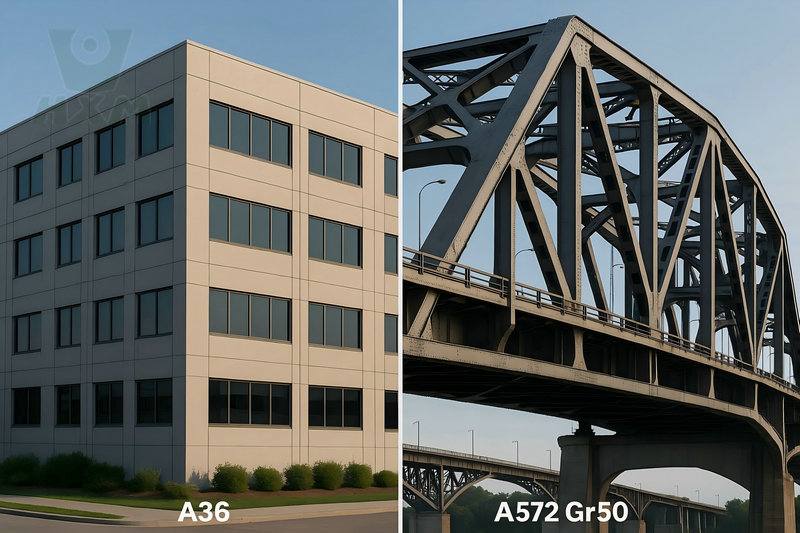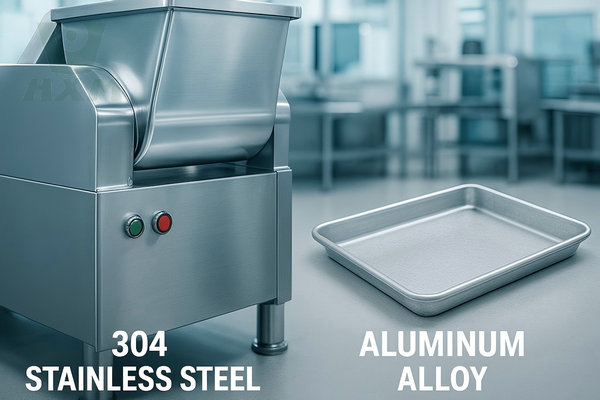
In the food processing industry, choosing equipment material is one of the most critical decisions you will make. It directly impacts food safety, operational efficiency, equipment lifespan, and ultimately, your bottom line. Two of the most common metals in this conversation are 304 stainless steel vs aluminum alloys. But how do you decide which is right for your application?
As a leading supplier of industrial metals with decades of experience serving the food and beverage sector, Huaxiao Metal is here to provide clarity. This comprehensive guide will walk you through a detailed comparison to help you make an informed and safe choice.
You can also read our foundational guide on aluminum vs. stainless steel here for a general overview of these two metals. This article, however, will focus specifically on the demands of the food processing environment.
The Industry Standard: Why 304 Stainless Steel Dominates Food Processing
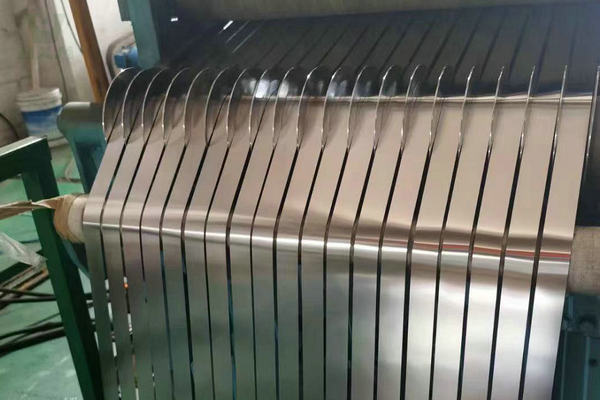
When you think of a clean, sanitary, and professional kitchen or processing plant, you are picturing stainless steel. Grade 304, also known as 18/8 stainless steel, is the undisputed workhorse of the global food industry for several compelling reasons.
Exceptional Corrosion Resistance: 304 stainless steel contains significant amounts of chromium and nickel, creating a passive, non-reactive surface. This makes it highly resistant to rust and corrosion from the vast majority of food acids (like citric acid in fruits or lactic acid in dairy) and the aggressive cleaning chemicals required for sanitation.
Superior Hygiene and Cleanability: The surface of 304 stainless steel is non-porous. This means there are no microscopic pits or crevices for bacteria, viruses, or mold to hide and grow. It is incredibly easy to clean and sanitize, ensuring you can consistently meet stringent food safety standards.
Impressive Durability and Strength: From resisting impacts to handling wide temperature fluctuations during cooking or sterilization, 304 stainless steel maintains its structural integrity. It does not chip or crack easily, ensuring a long and reliable service life.
Chemically Inert: It will not react with foods or beverages, meaning it will never impart any metallic taste, odor, or color. The purity of your product is guaranteed.
Common applications for 304 stainless steel include storage tanks, piping systems, worktops, mixing vats, fermentation tanks, and nearly every surface that requires durability and absolute hygiene.
Looking for a trusted supplier of 304 Stainless Steel for food-grade equipment?
The Challenger: When is Food-Grade Aluminum Alloy a Viable Option?
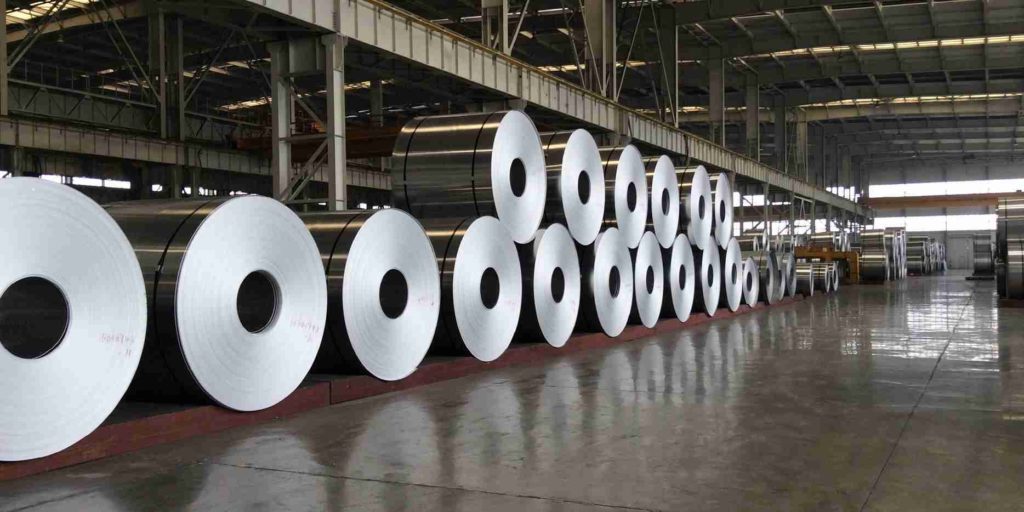
Aluminum alloys, particularly those in the 3000 or 5000 series, also find their place in the food industry, primarily due to a few unique properties.
Lightweight: Aluminum is about one-third the weight of stainless steel, making it easier to handle and ideal for applications where weight is a primary concern.
Excellent Thermal Conductivity: It transfers heat very quickly and evenly. This is why it’s a popular choice for bakeware, pots, and pans where rapid heating is desired.
Lower Initial Cost: Typically, the upfront purchasing cost of aluminum is lower than that of stainless steel.
However, for most industrial food processing applications, these advantages are overshadowed by significant limitations:
Lower Corrosion Resistance: Aluminum is highly reactive to both acidic and alkaline substances. Contact with foods like tomatoes, citrus fruits, or certain condiments can cause the metal to corrode and potentially leach into the food.
Softer Surface: Aluminum is a much softer metal than stainless steel. It scratches easily, and these scratches can become breeding grounds for bacteria, compromising food safety and making proper cleaning difficult.
Requires Surface Treatment: To be used safely, aluminum often needs a protective layer, such as an anodized coating. This coating can wear down or be damaged over time, exposing the reactive metal underneath.
Head-to-Head Comparison: 304 Stainless Steel vs Aluminum Alloy
This table summarizes the key differences for at-a-glance decision-making:
| Feature | 304 Stainless Steel | Aluminum Alloy |
| Corrosion Resistance | Excellent | Fair (Sensitive to acids & alkalis) |
| Food Safety & Hygiene | High | Conditional (Depends on coating & food type) |
| Durability / Strength | High | Medium |
| Weight | Heavier | Lightweight |
| Thermal Conductivity | Fair | Excellent |
| Ease of Cleaning | Very Easy (Non-Porous) | Harder (Scratches easily) |
| Long-Term Cost (TCO) | Lower | Can be higher due to maintenance & replacement |
| Initial Purchase Cost | Higher | Lower |
The Verdict: Making the Safest and Most Cost-Effective Choice
While aluminum has its niche, especially in applications prioritizing heat transfer and low weight, the conclusion for industrial food processing is clear.
For the vast majority of applications, 304 stainless steel is the superior and safer choice.
Its unparalleled resistance to corrosion, ease of cleaning, and robust durability make it a long-term investment in quality, safety, and compliance. While the initial cost may be higher, the lower Total Cost of Ownership (TCO)—factoring in longer equipment life, reduced maintenance, and zero risk of product contamination—makes it the most economically sound decision.
Choosing 304 stainless steel is not just choosing a material; it’s choosing peace of mind.
FAQ: 304 Stainless Steel vs Aluminum Alloy
Is 304 stainless steel completely rust-proof?
No material is 100% “rust-proof” forever, but 304 stainless steel is highly rust-resistant. Under normal food processing conditions, it will not rust. Rusting can only occur in extremely aggressive environments, such as constant exposure to high concentrations of chlorides (found in some salts and industrial sanitizers). For these specific, harsh applications, a grade like 316 stainless steel, which has enhanced corrosion resistance, might be recommended.
So, is aluminum ever safe for food contact in an industrial setting?
While some anodized aluminum is used for consumer bakeware, it is generally not recommended for industrial food processing equipment. The risk of the protective coating being scratched or worn away by abrasive foods, mechanical cleaning, or acidic/alkaline substances is too high. A compromised surface can lead to aluminum leaching and bacterial contamination, posing a significant food safety risk.
What's the main difference between 304 and 316 stainless steel for food use?
The key difference is the addition of molybdenum in 316 stainless steel. This single element gives it superior resistance to corrosion from chlorides and salts.
Use 304 SS for: General purpose applications, dairy, brewing, processing fruits and vegetables.
Use 316 SS for: Applications involving brines (like in pickling or meat curing), high-salt foods, or facilities that use chloride-based cleaning agents.
At Huaxiao Metal, we supply both grades and can help you choose the most cost-effective option for your specific needs.
The initial cost of aluminum is tempting. Why should I really invest more in stainless steel?
Think in terms of Total Cost of Ownership (TCO), not just initial price. Stainless steel is a long-term investment that pays for itself. You save money over time due to:
Longer Equipment Life: It won’t need to be replaced nearly as often.
Less Downtime: It’s more durable and requires fewer repairs.
Guaranteed Safety: It eliminates the risk of costly product recalls or liability from material contamination.
The upfront cost is higher, but the long-term value and peace of mind are significantly greater.
How can I be sure the material I purchase is truly certified food-grade 304 stainless steel?
This is a critical point. You should always demand a Material Test Certificate (MTC) from your supplier. This document provides full traceability, detailing the precise chemical composition and mechanical properties of the metal you are receiving. Reputable suppliers like Huaxiao Metal will always provide full certification with their products to guarantee quality and compliance.
Partner with Huaxiao Metal for Your Food-Grade Metal Needs
Making the right material choice is simple when you have the right partner. At Huaxiao Metal, we supply premium-quality 304 stainless steel products that meet the highest industry standards. Our experienced team understands the unique challenges of the food processing industry and is ready to assist you.
Have questions or need materials for your next project?
Contact our expert team today for a free consultation and a competitive quote.

